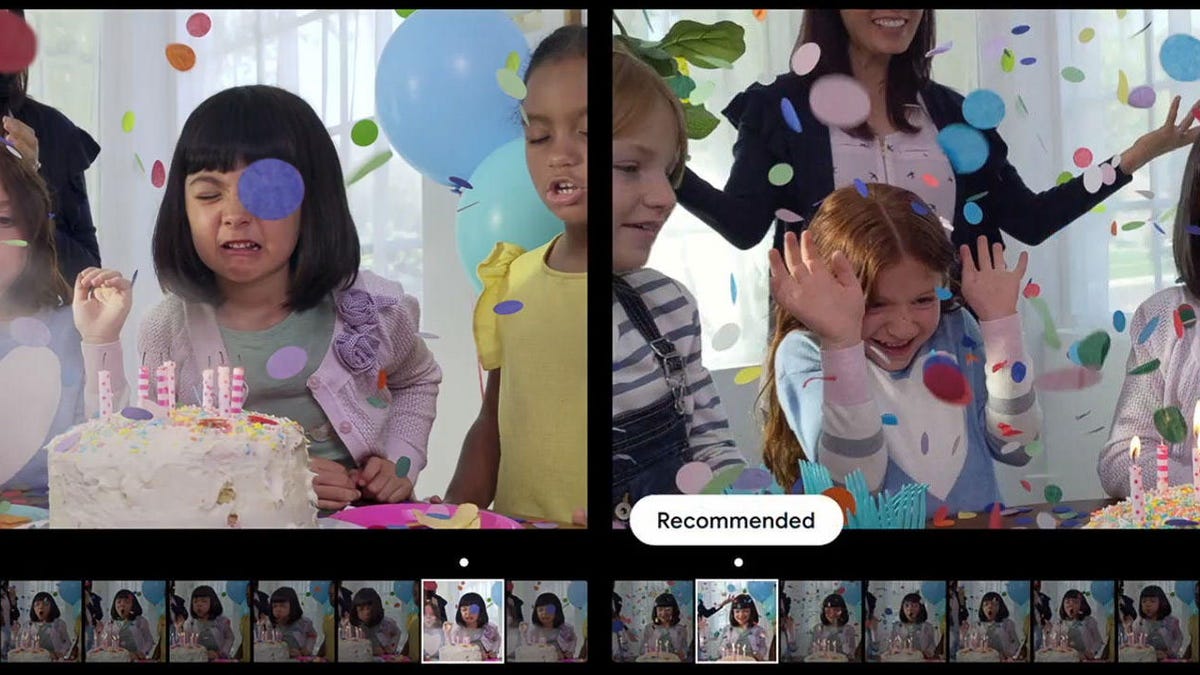Pixel 3 camera has better resolution and can shoot in the dark with no flash
Google's new smartphone also can track moving subjects and improve photo resolution.

Top Shot scans a sequence of photos and recommends what it thinks is the winner of the bunch.
With its Pixel 3 phone, Google has improved photography with a feature called Top Shot to avoid unflattering photos, an ability to shoot in the dark with no flash, and a way to zoom in beyond the camera's ordinary resolution known as Super Res Zoom.
Top Shot lets you skip photos where people are blinking, frowning and otherwise not looking their best, Google said at its Pixel 3 launch event Tuesday. Smile and blink detection aren't new to the industry, but it's a task well-suited to AI technology where Google excels.
The new camera also has a mode called Night Sight that lets you shoot in dark conditions without a flash -- and the unnatural blaring light they often inflict on photos, Google said.
Smartphone cameras are a big deal -- for you and for Google. Photography is core to how we share our lives electronically with friends and family and one of the best ways phone manufacturers can make this year's model stand out from last year's. And for Google, a good camera will mean you're more likely to tap into its highly regarded Google Photos service -- which by the way offers unlimited storage for original-resolution photos taken with Pixel phones.
"We've taken the world's best smartphone camera and made it even better," said Rick Osterloh, head of Google's hardware efforts.
The first Google Pixel, introduced in 2016, and the Google Pixel 2 from 2017 had excellent cameras. But Google so far isn't following the approach of rivals like Apple, LG Electronics and Samsung that are building multiple main cameras into their phones so you can take, for example, wide-angle and telephoto shots.
The Google Pixel 3 has a super-wide selfie camera to photograph more people -- and more scenery.
Instead of adding a main camera with a longer focal length on the back of the camera, Google added a second wider-angle camera on the front for group selfies. The field of view is 184 percent wider than that of an Apple iPhone XS, said Brian Rakowski, a Google vice president of product management, good for capturing not only more people but also more scenery and more of the photo story.
Super Res Zoom combines several photos "to create a beautiful, zoomed-in shot so you can get closer to the details and frame the shot you want," Rakowski said. It's related to technology (called super resolution, by the way) that scientists have used to improve photos of Mars, he added.
Google Pixel 2018 event
The Pixel 3 also lets you track moving subjects better with a feature called motion autofocus. It improves its portrait mode with the ability to adjust color saturation, focus point and depth of field. And a photo booth mode automatically takes a shot when you smile or make a funny face so you don't need to fool with pushing the shutter button.
Superior camera technology has been a hallmark of the Pixel line. It married high-quality image sensors with new image-processing smarts to help set new standards for smartphone photography. Google's core approach -- combining multiple underexposed shots into one photo -- is now part of the highly regarded new iPhone XS camera system.
One of Google's camera engineers is Marc Levoy, who as a Stanford professor invented the term "computational photography." The term, while broad, generally refers to using computer processing to reach beyond physical camera hardware limits.

